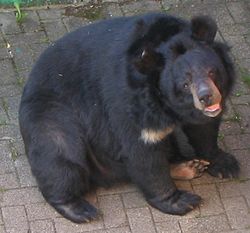Sampling Afghanistan's wildlife

- Altai weasel ( Mustela altaica )
- Asiatic black bear ( Ursus thibetanus )
- Asiatic brown bear ( Ursus arctos )
- Eurasian otter ( Lutra lutra )
- Geoffroy's bat ( Myotis emarginatus )
- Gray wolf ( Canis lupus )
- Hare ( Lepus tolai )
- Ibex ( Capra sibirica )
- Kashmir cave bat ( Myotis longipes )
- Leopard ( Panthera pardus )
- Lesser horseshoe bat ( Rhinolophus hipposideros )
- Long-tailed marmot ( Marmota caudata )
- Lynx ( Lynx lynx )
- Marco Polo sheep ( Ovis ammon polii )
- Markhor ( Capra falconeri )
- Mehely's horseshoe bat ( Rhinolophus mehelyi )
- Mouflon (or urial) ( Ovis orientalis )
- Pallas' cat ( Otocolobus manul )
- Pikas ( Ochotona spp )
- Red fox ( Vulpes vulpes )
- Sind bat ( Eptesicus nasutus )
- Snow leopard ( Panthera uncia ) [1]
- Stoat ( Mustela erminea )
- Stone marten ( Martes foina )
- Wild goat ( Capra aegagrus )
- Zarudny's jird ( Meriones zarudnyi )
